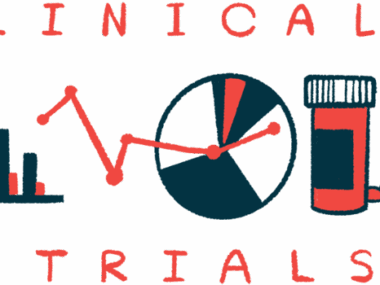IVIG effective in easing range of scleroderma symptoms: Review
Therapy particularly effective as add-on treatment
Written by |

Intravenous immunoglobulin (IVIG) eases skin, muscle and digestive symptoms in people with scleroderma (SSc), particularly when used as an add-on therapy, according to a recent review study.
While no improvements were seen in respiratory function, IVIG still led to stabilization of these symptoms.
The findings “suggest that IVIG may be effective in treating a range of organ-specific manifestations with minimal side effects, thus making it a potentially attractive therapeutic option for SSc,” the researchers wrote.
The review, “Role of intravenous immunoglobulins in systemic sclerosis (SSc): A systematic literature review,” was published in Seminars in Arthritis and Rheumatism.
Scleroderma, also called systemic sclerosis, is an autoimmune disease that causes the hardening and fibrosis — thickening or scarring — of the skin. Often, scleroderma also affects internal organs, posing a risk of more severe outcomes.
Studying IVIG and scleroderma
IVIG has been a standard treatment in several autoimmune diseases, such as myasthenia gravis. IVIG delivers specific antibodies purified from healthy people to help neutralize self-reactive antibodies in a patient’s bloodstream.
In SSc, “reports of [IVIG’s] efficacy have been variable, and its use across multiple organ manifestations of SSc has not been comprehensively reviewed,” the researchers wrote.
The researchers, from The University of Melbourne, Australia, conducted a review of studies published from January 2003 to April 2024, looking the effects of IVIG on several organs affected by SSc.
The review considered 12 studies, covering a total of 354 SSc patients. Most patients were women (83%), with an average age of 53.4 at time of IVIG start. Different types of studies were part of the analysis, including a clinical trial, pilot studies, and an open-label study (one in which both investigators and patients are aware of what drug or intervention is being assessed).
Diffuse cutaneous systemic sclerosis (dcSSc) was the most common SSc type, found in 76% of the patients studied, followed by limited cutaneous SSc (lcSSc), which affected 23%. About a third of patients (31.6%) also presented other SSc symptoms, most commonly myositis, or muscle inflammation and weakness.
The most common dose of IVIG was 2 g/kg/month administered over two to five days. In six studies, IVIG was given together with immunosuppressants, including cyclophosphamide, corticosteroids, azathioprine, and methotrexate.
Seven studies reported side effects associated with IVIG use; the majority were minor. They included nausea, headache, or fever, and did not result in treatment withdrawal. Ten patients withdrew from their studies due to other side effects, such as acute kidney injury or high blood pressure.
The review documented 18 outcomes, which were grouped into five categories: skin, respiratory, musculoskeletal, digestive tract, and other, which included clinical improvements reported by patients and physicians and the benefit of corticosteroid sparing.
Overall, IVIG treatment was effective at easing skin thickening, assessed mainly by the modified Rodnan Skin Score, and joint pain. Among the studies assessing the impact on the musculoskeletal system, one showed a lower percentage of patients with muscle pain after treatment. A study showed muscle weakness was lessened in 24% of patients, and another showed this benefit in 92%.
IVIG also had positive effects on digestive symptoms, such as less intense and less frequent acid reflux. An easing of abnormal bowel symptoms, as well as reduced bloating and better social functioning and emotional well-being, were also reported after IVIG.
Two of five studies assessing patient-reported outcomes showed that IVIG led to a marked improvement in overall health. One study showed that all patients treated with IVIG achieved remission of muscle disease, compared with 82% of controls given a placebo. Time to relapse of muscle disease also was longer for IVIG patients compared with those on a placebo — a median of 23 months vs. 12 months.
Corticosteroid use was significantly reduced with IVIG, according to data from three studies.
While no significant easing of respiratory symptoms was observed with IVIG, the treatment led to a stabilization in pulmonary function tests, which “may be considered a positive outcome in itself,” the researchers wrote.
While the findings support the potential of IVIG for easing skin, musculoskeletal and digestive symptoms in SSc, the evidence stems from “mostly non-randomised studies with small sample sizes at high risk of bias,” the researchers wrote. Randomized studies randomly assign participants into an experimental group or a control group.
“High-quality, randomised clinical trials would assist to confirm the findings of this review,” they concluded.






